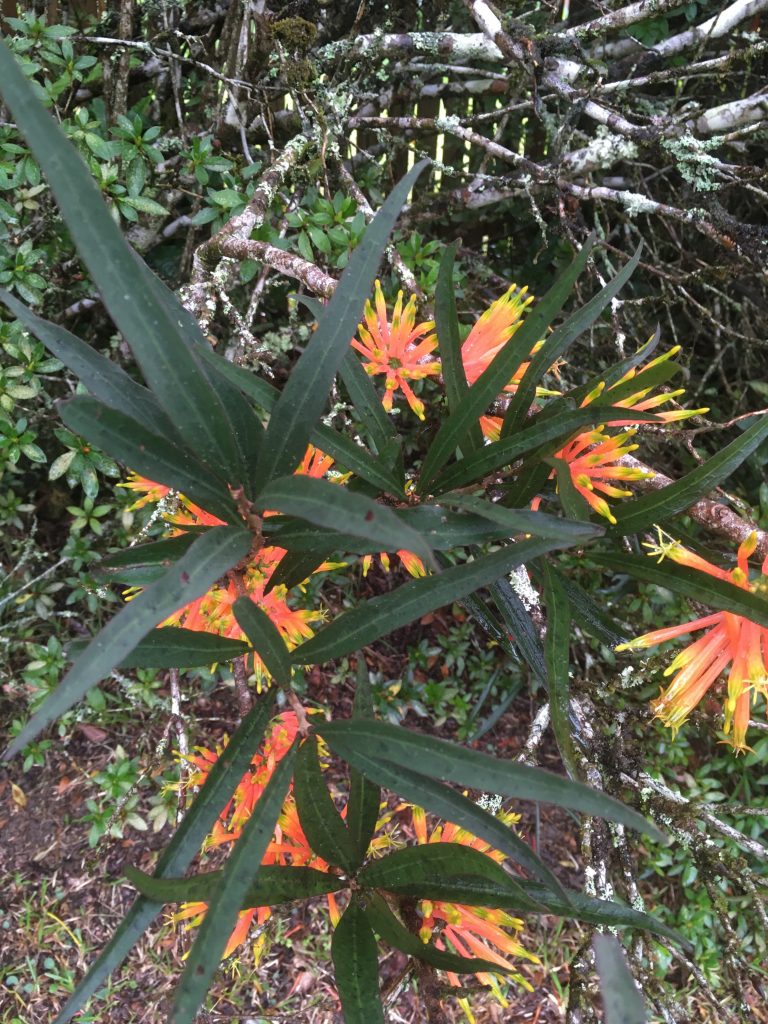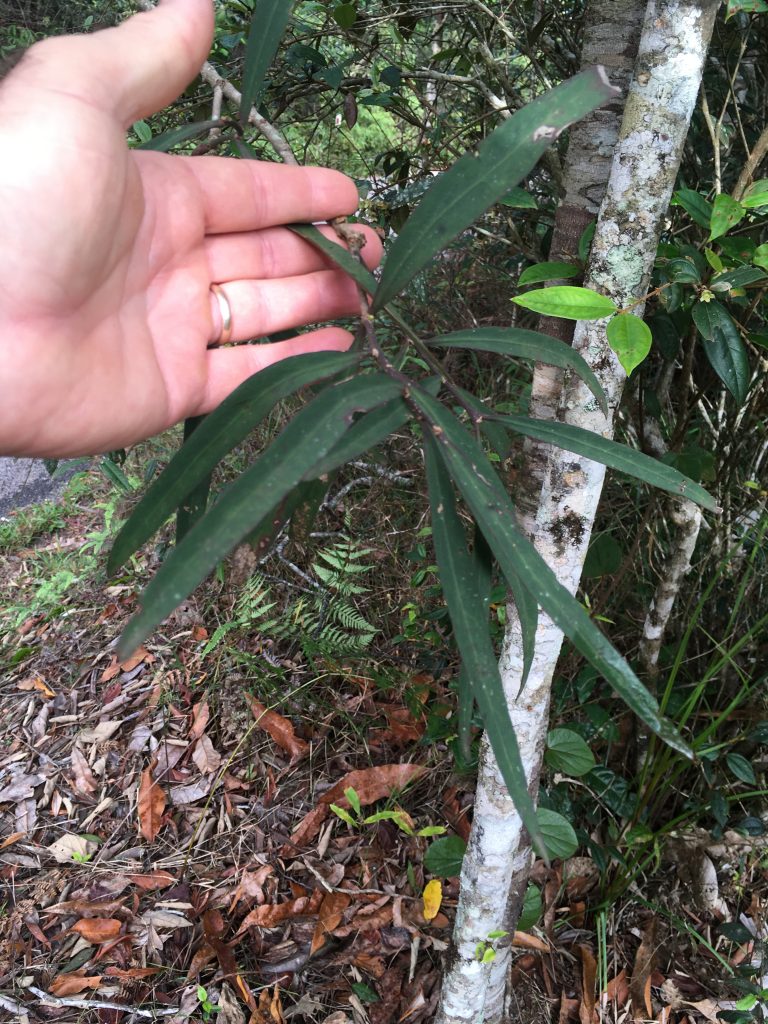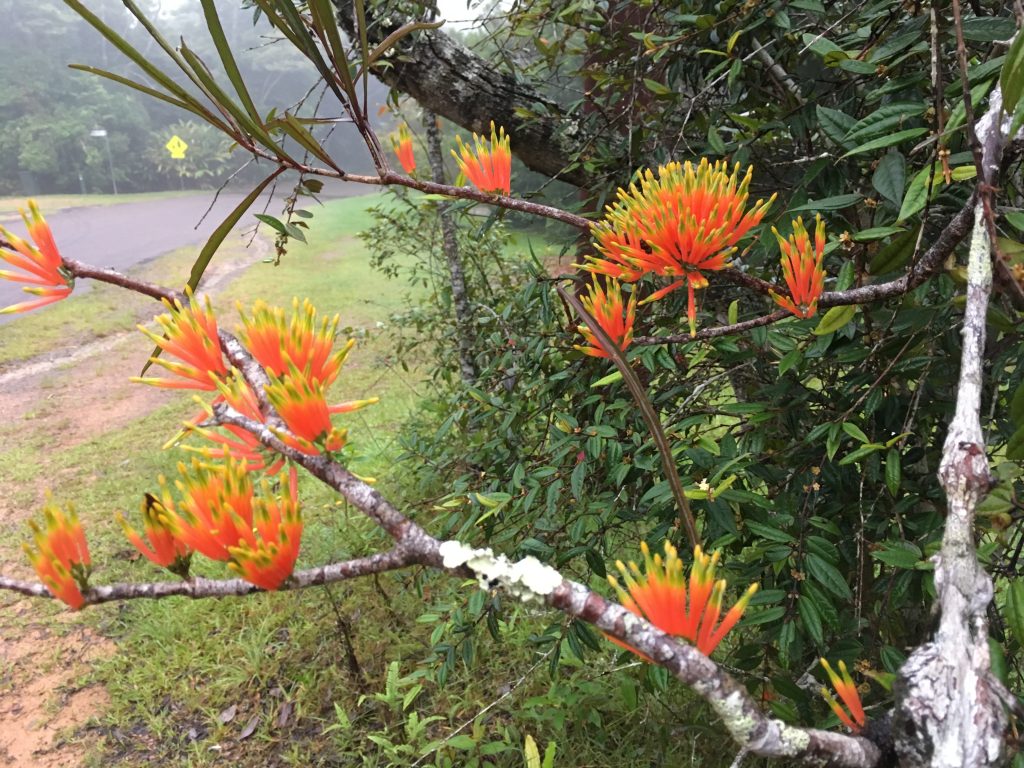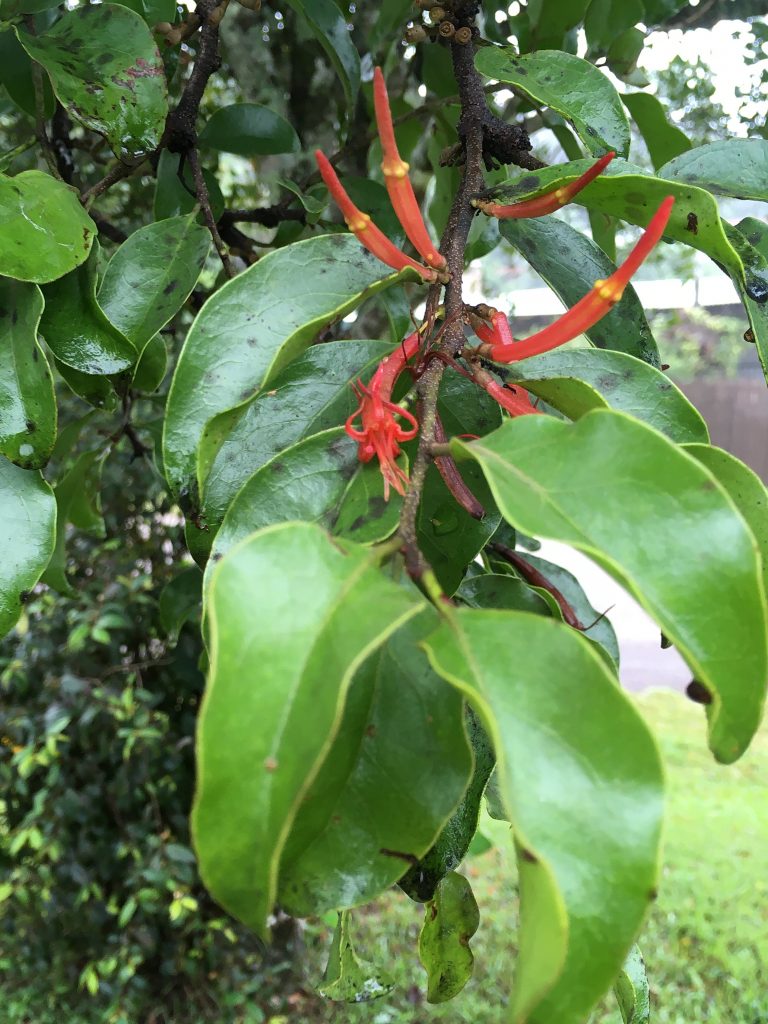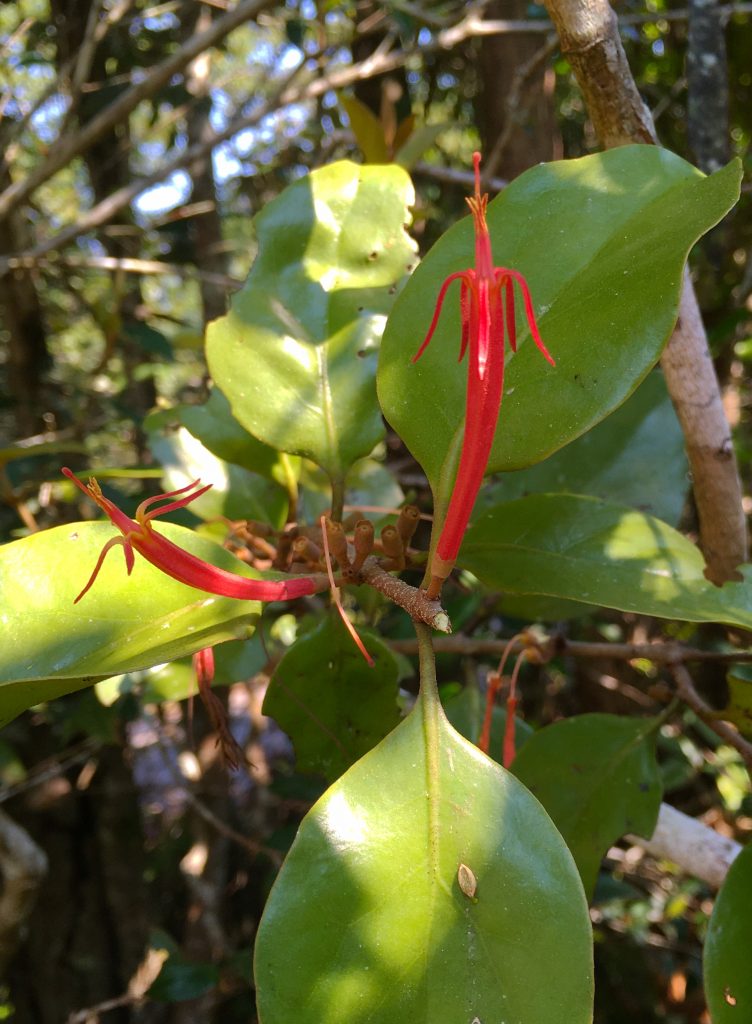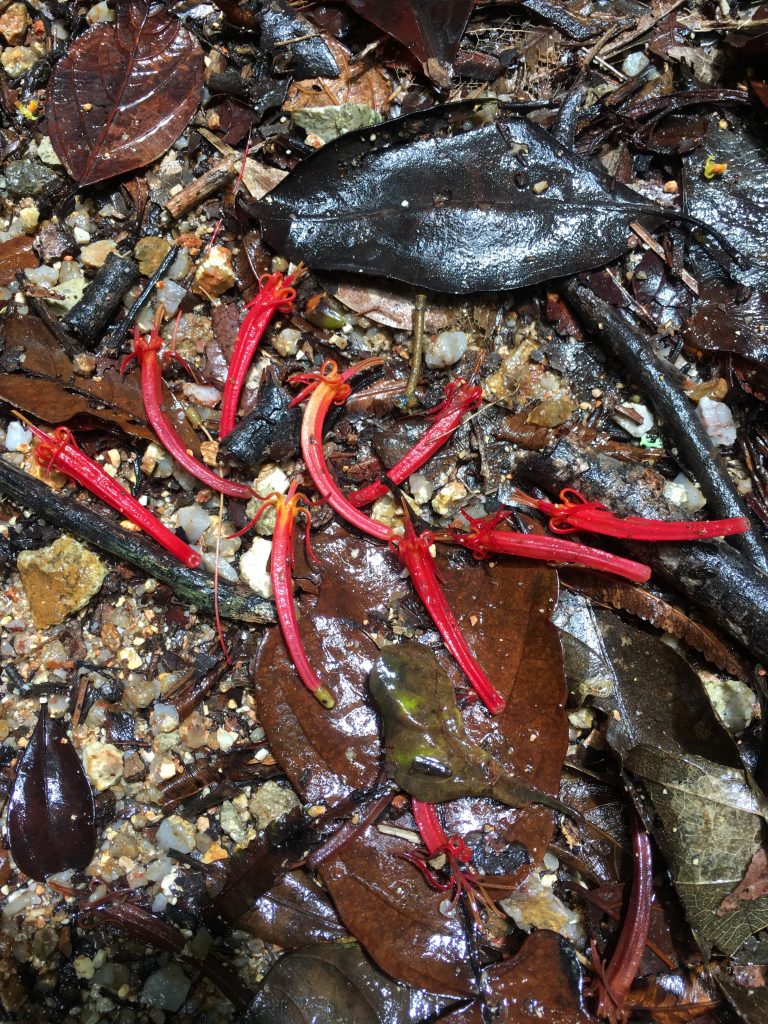Paluma’s annual garden competion will occur this Wednesday, October 11th. As ususal the Judges from Bunnings will be escorted around the gardens by a member of the PDCA. Any residents who do not want to participate this year, and who have not already notified us, please email or ring Jamie Oliver or Lynn Hyland.
Category: What’s Blooming
What’s Flowering at Paluma: Banksia cultivar
If you have visited the Rainforest Inn recently you will have noticed the impressive Banskia flowering in the garden at the front of the building. It’s hard to miss, given the very large and striking deep orange to bronze coloured blooms.
Jennie says that she planted the Banksia about 6 years ago and while it has grown into a sizeable bushy shrub standing to about 2.5 m in height, this is the first time it has flowered. Jennie purchased the plant from a nursery in Ingham and she is unsure of its exact identification. We think it is most likely Banksia ‘Giant Candles’ which is a registered cultivar and a hybrid between Banksia ericifolia and Banksia spinulosa.
The flower spikes are at least 25 cm in size and they can reach up to 40 cm. Flowering time is late Autumn through winter. Banksia ‘Giant Candles’ is described as an adaptable large shrub that can grow up to 5 m in height if left unpruned. It likes a sunny and well-drained position, flowering best in full sun.
If you are looking for a stunning plant to bring birds to your garden then this is a great option. Several times over the past weekend we noticed the local honeyeaters visiting the giant candle flowers. Lewins’ honeyeaters and eastern spinebills were eager feeders on the nectar laden flowers in the early morning and late afternoon.
Text & Photos by Michele Bird & Jennie Robinson
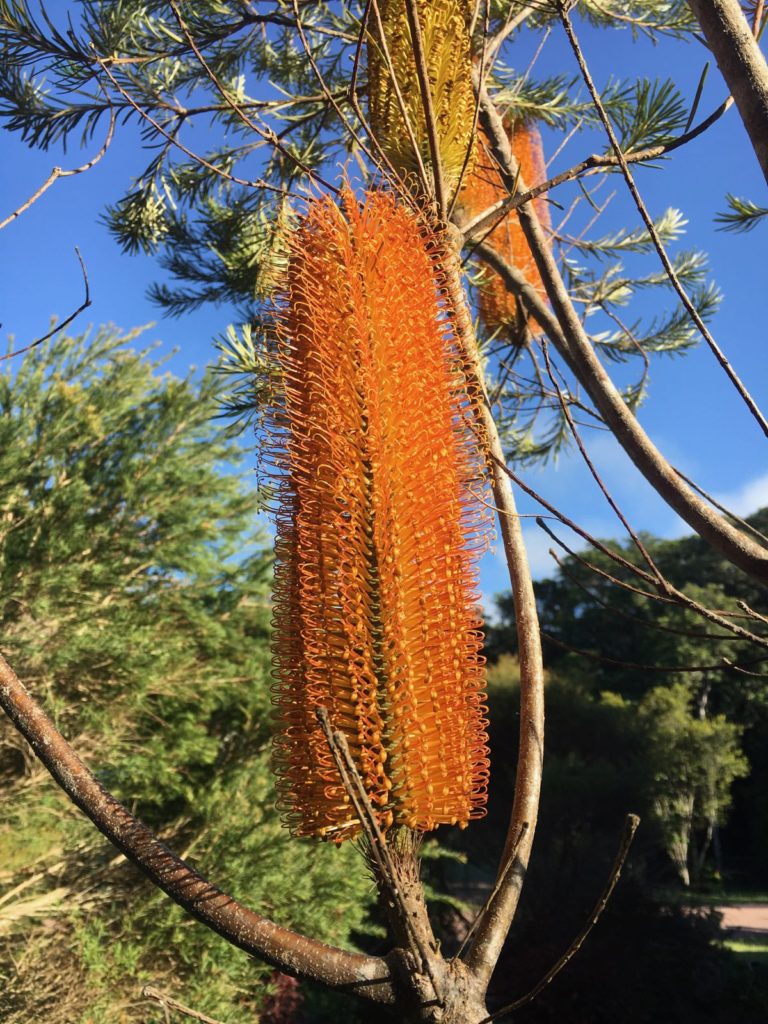
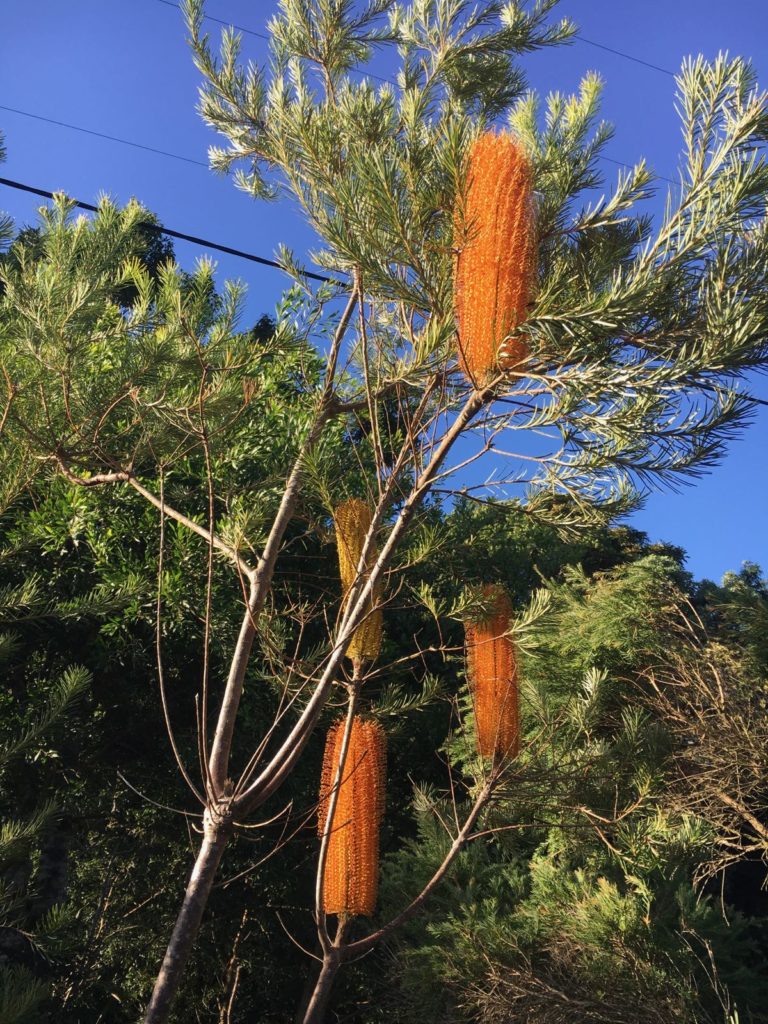


What’s Blooming in Paluma – Bromeliads
Over the last month or so, one of the consistently flowering plants in my garden, as well as other gardens in the village has been bromeliads.
Broms belong to the family Bromeliacea which includes “air plants” in the genus Tillandsia. They come in an amazing range of colours (on both the flowers and leaves) and flower shapes. They can grow anywhere from full sun to deep shade and in wet and dry habitats.
In Paluma they are great plants for “mature” gardens with a full shady canopy that restricts the number of brightly flowering plants that can grow in the gloom. Currently one of my favourite broms is blooming throughout the village. Bilbergia pyramidalis, like most bromeliads, comes from South America. Its common names (flaming torch and foolproof plant) are certainly apt. It has a stunning large red and purple flower and it tends (at least in my garden to bloom during only a short few days in March when the effect in mass plantings is quite spectacular.

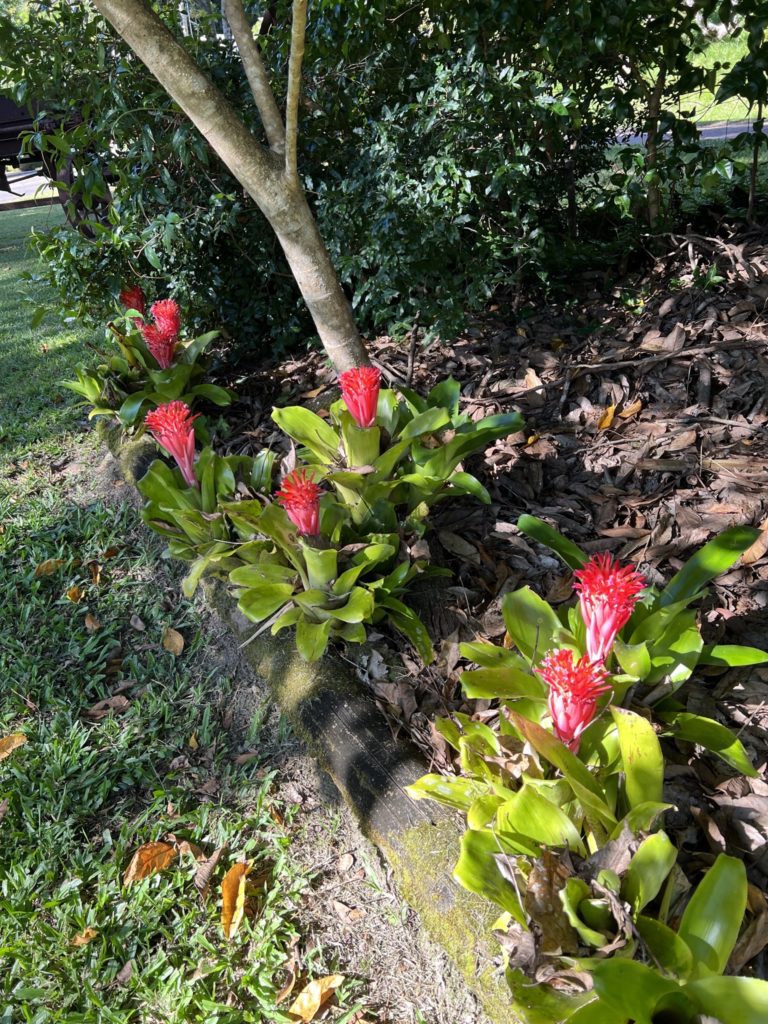
This year the blooming period seems to be less synchronous and more prolonged, perhaps due to the lack of a “proper” wet season.

This species grows prolifically in semi-shaded to fully shaded areas and it is dead-easy (fool proof) to grow and propagate. I have created a living boundary “fence” along one side of my garden by heaping up my endless supply of branch timings and then just tossing B. pyramidalis onto the top of the pile. Three to six months later it formed a living cover and a spectacle of colour once a year thereafter.

A living and flowering border fence
Another stunning relative of the bromeliad that has just finished flowering is the Pink quill (Tillandsia cyanea).
Tillandsias are also called air plants since they can grow epiphytically on tree trunks or rocks without any soil. T. cyanea is different in that it prefers to grow in a small pot of well drained soil. It produces 2-4 “pups” each year so it doesn’t take long to get a row of these delightful plants lined up on a ledge in your garden (see the header for this post).
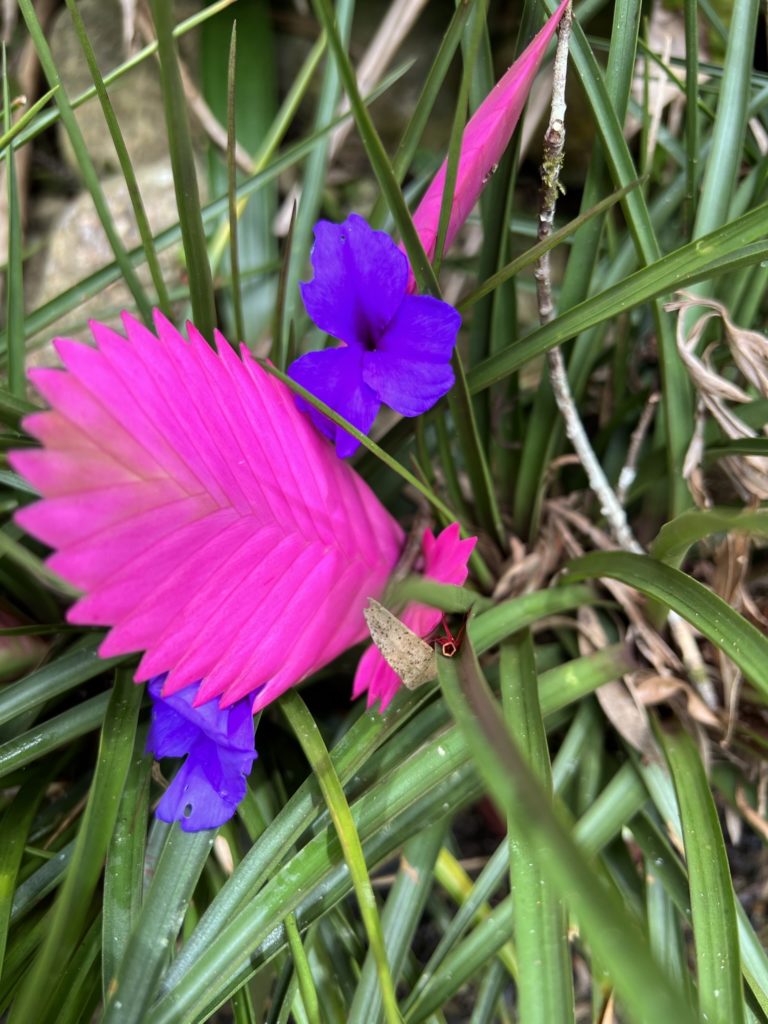
Some of the other broms that have been flowering, or showing off their colours are also shown below, together with any names I have been able to attribute to them (this is still a work in progress). If you are interested in long-lived flowers then Guzmania conifer and Achmea fasciata keep their blooms for up to 6 months or more!







Text and photos by Jamie Oliver
What’s Flowering at Paluma – Pastel Flower or Love Flower
On a recent trip up the Paluma Range Road local resident Jodie spotted the beautiful flowering herb below, growing along the roadside in deep shade towards the top of the range in the general area of Mountain Creek.
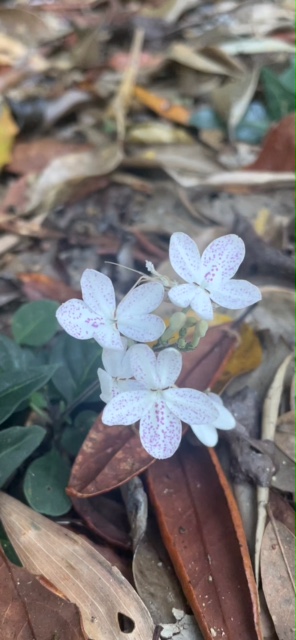
This is the Pastel Flower, also commonly called the Love Flower (scientific name Pseuderanthemum variabile).
It is described as a ‘small soft herb’ which grows in shady damp places, often near creeks or along gullies. It is said to be common and widespread in warmer rainforests from southeast New South Wales to Cape York in Queensland. In North Queensland it can be found growing at higher altitudes up to 900m. The plant grows only 15 to 30 cm in height and produces small heads of delicate flowers. The flower colour is variable, but most often they are white with a sprinkling of darker (purplish) spots on the lobes. It flowers over the spring and summer months. The opposite leaves are lance-shaped and often have a dark red blush on the under side.
Well spotted Jodie and thanks for sharing the Love (Flower)!
(References: Australian Rainforest Plants III, Nan & Hugh Nicholson 1991 and Native Plants Queensland Volume 1, Keith A.W. Williams 1979).
What’s Flowering at Paluma
We have previously posted on the beautiful Tibouchina’s growing in many of the village gardens, but it is hard not to mention the current spectacle of the Tibouchina Chameleon in gardens along Mount Spec Road.
The Venn’s large shrub at the eastern end of the village is a show-stopper and I saw many visitors stopping to photograph it over last weekend – just as I did!. It seems just about every second garden has a ‘Chameleon’ and why not, when they thrive with very little care in our mountain climate. Other good specimens are located towards the central and western end of the village at Nick and Glenda’s place and at Neil and Jennies at Cloud Cottage.
Tibouchina Chameleon is a dense and fast growing evergreen shrub. At Paluma it seems to flower at least twice a year. The flowers open white in colour and then change to mauve and pink as they age over several days. If you are looking for a hardy, colourful and rather special plant for your garden, you can’t go past one of these beauties.



Text & Photos by Michele Bird
What’s Blooming (and budding) in Paluma – Native Orchids
Paluma gardens have a pretty wide variety of both native and exotic orchids and at least one or two species can usually be seen flowering during most seasons. Over the last month, two striking but relatively uncommon native orchids have flowered around the village: the spider orchid (Tetrabaculum cacatua) and the orange blossom orchid (Sarcochilus falcatus).
Michele has written about the spider orchid previously, but it’s great to see it again in full splendor and flowering at nearly the same time of year (July 20 in 2019 and July 14 in 2021). The orchid flowers lasted only a few days and are gone now, although there might be other speciments around the village or tracks. These orchids have unusual pseudobulbs (“stems”) that are square in cross section.
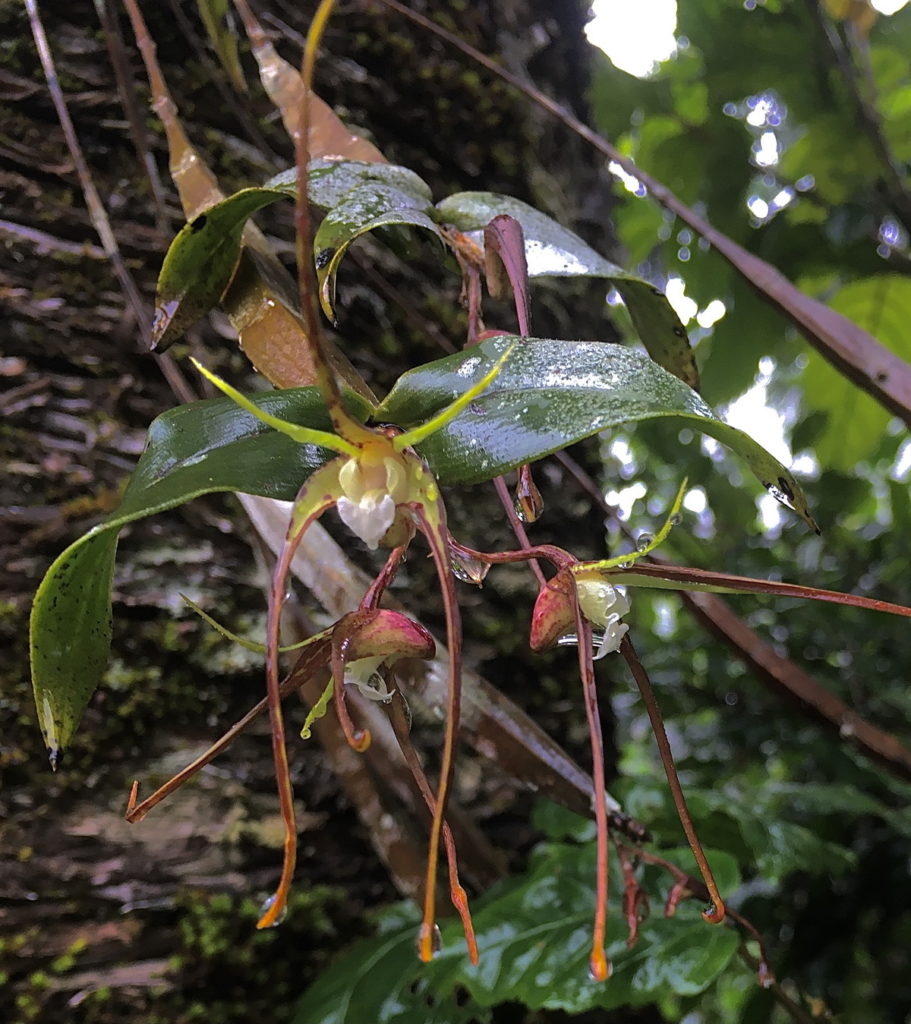
Orchid names have been in a state of flux recently. While this specimen was identified as Dendrobium tetragonum in the original post this species has been devided into 4 species in the genus Tetrabaculum, two of which can be found in Paluma. The one posted here (T. cacatua or the yellow tree spider orchid) has light yellow to white flower petals with few or no reddish spots and is restricted to forests above 900m). The other one to look out for (occurs below 900m) is T. capitisyork or the blotched spider orchid, which – you guessed it – has conspicuous red blotches on the petals. But for most of us, it’s just a gorgeous flower no matter what its official name is, and I am sure Shakespeare would agree!
The other beautiful orchid in flower at the moment is the orange blossum orchid (Sarcochilus falcatus). This delightful dainty orchid has a white flower with red stripes and yellow margins on the labellum (lower petal). It also flowered at nearly the same time last year. It is endemic to east and southeast Australia and favours cool moist forests. In north Queensland its temperature preferences restrict it to higher altitude rainforests. Although it is listed as being wide-spread and common in Austraian Tropical Rainforest Orchids, I have not seen this before during my frequents walks along the tracks.
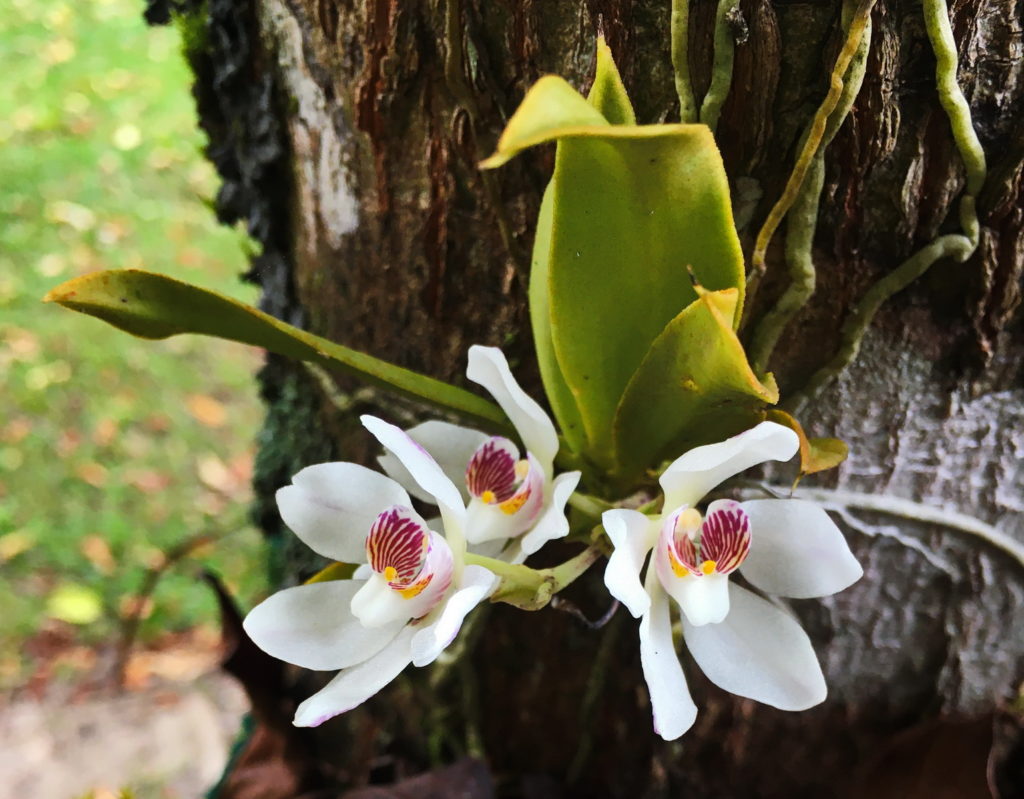

Other fairly common native orchids that are currently sending out flower spikes and should be in full bloom during August in Paluma gardens or along the tracks are the rock orchid (Dendrobium speciosum, the slender cane orchid (Dendrobium adae), the buttercup orchid (Dendrobium agrostophylla), and the green catepillar orchid (Plexaure crassiuscula). The first three are described in the 5 easy species article on orchids. The last is illustrated here.
Text and photos by Jamie Oliver
Mauve Magic at the Village Green
On Saturday (10 July) I came across some rather spectacular bright purple fungi at the Village Green. There was only a small patch of these amazing fungi, poking up through the grass in deep shade. I can only suppose that the fungi might have popped up over night, because when I saw them in the early morning they looked fresh, bright and were vibrant in colour. They were easily spotted amongst the green grass. By next day and some 24 hours later, the fungi had faded to a dull brown-beige colour with only the merest hint of purple remaining around the very edge of the cap.
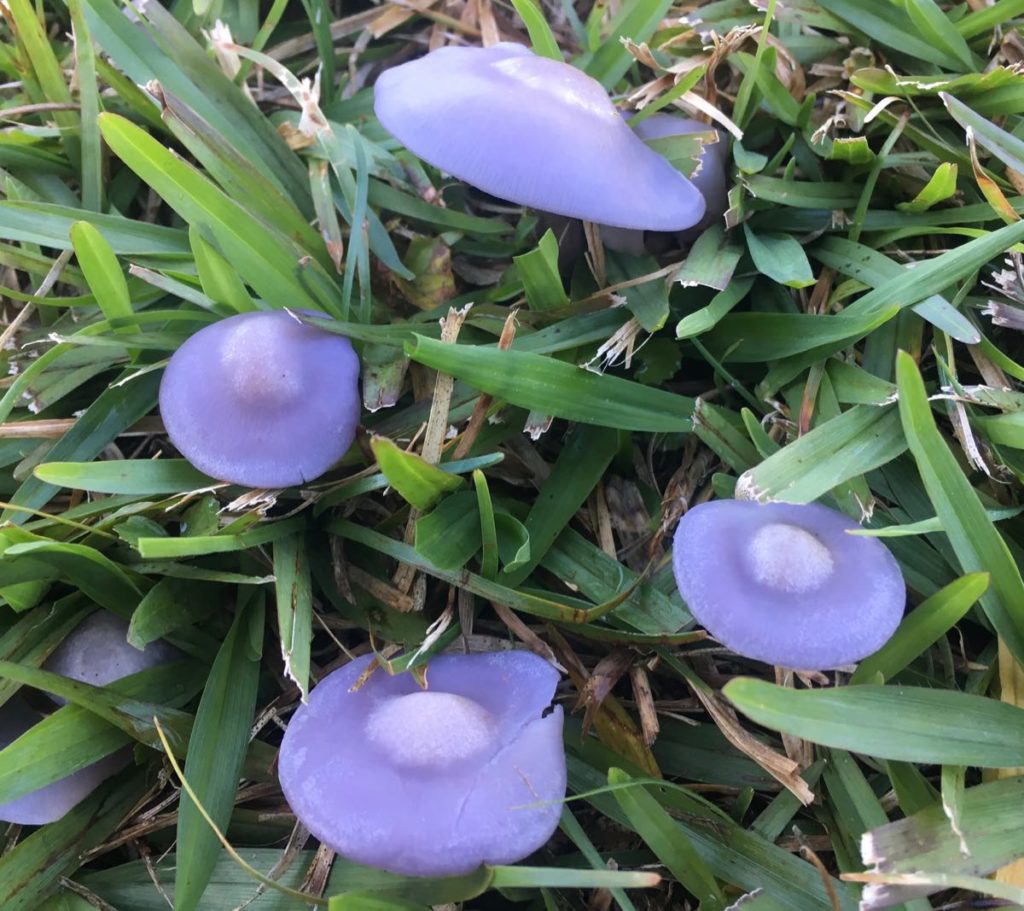
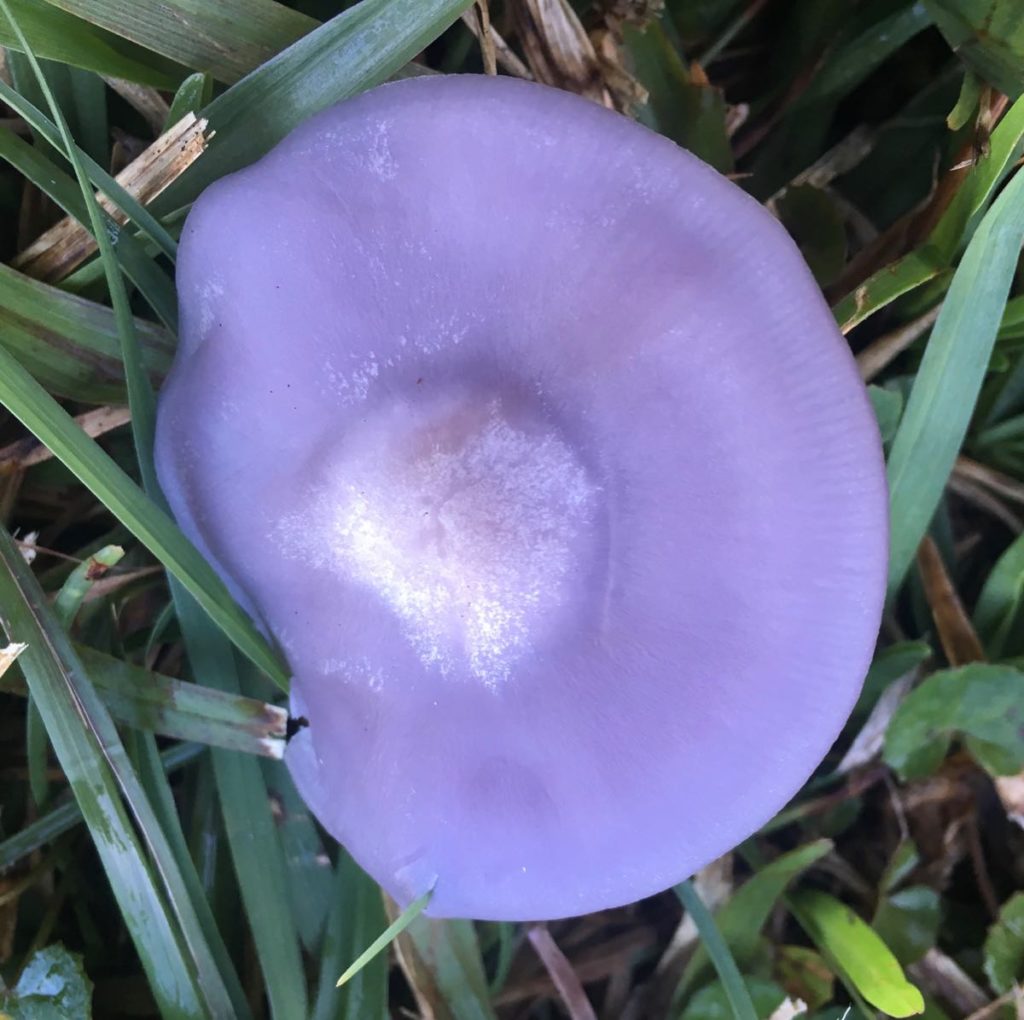
This website has featured many previous posts on the amazing diversity of fungi growing in and around the village – in various habitats from local gardens, along walking tracks and in deep rainforest. Checking these previous posts I can’t see any other examples of ‘purple fungi’ resembling those recently spotted on the Village Green. I did do a bit of googling in the attempt to identify these fungi, but being far from an expert, I gave up before too long. Can anyone help to identify these rather brilliant mauve mushrooms…..?
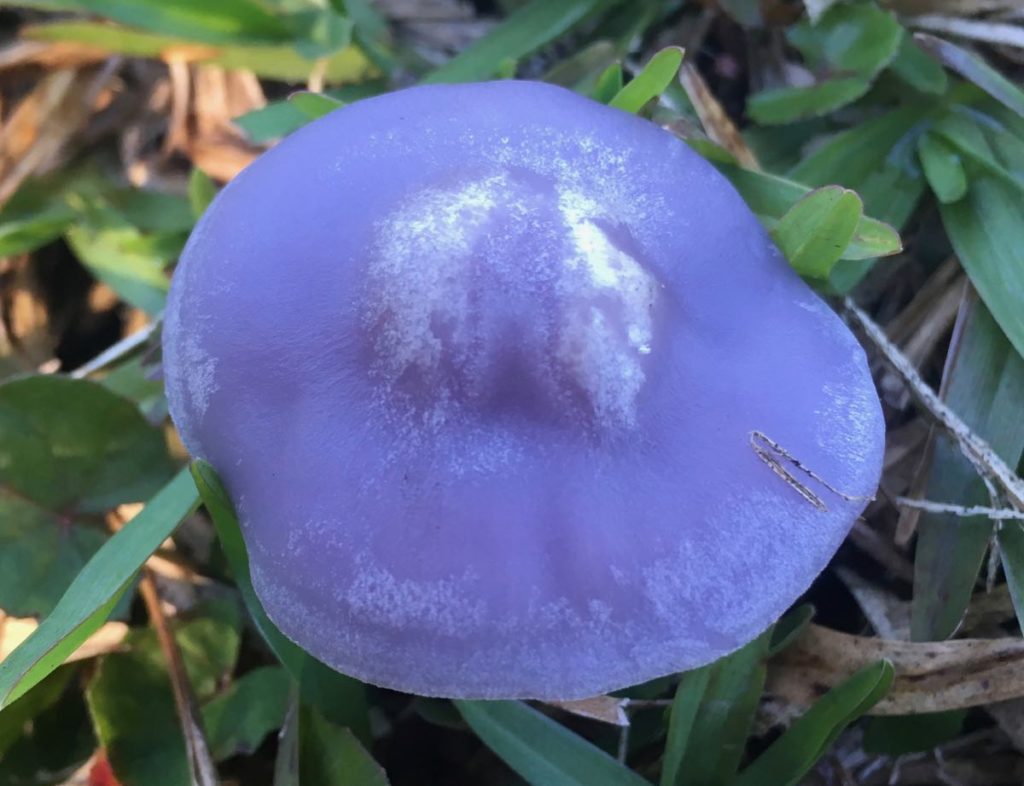
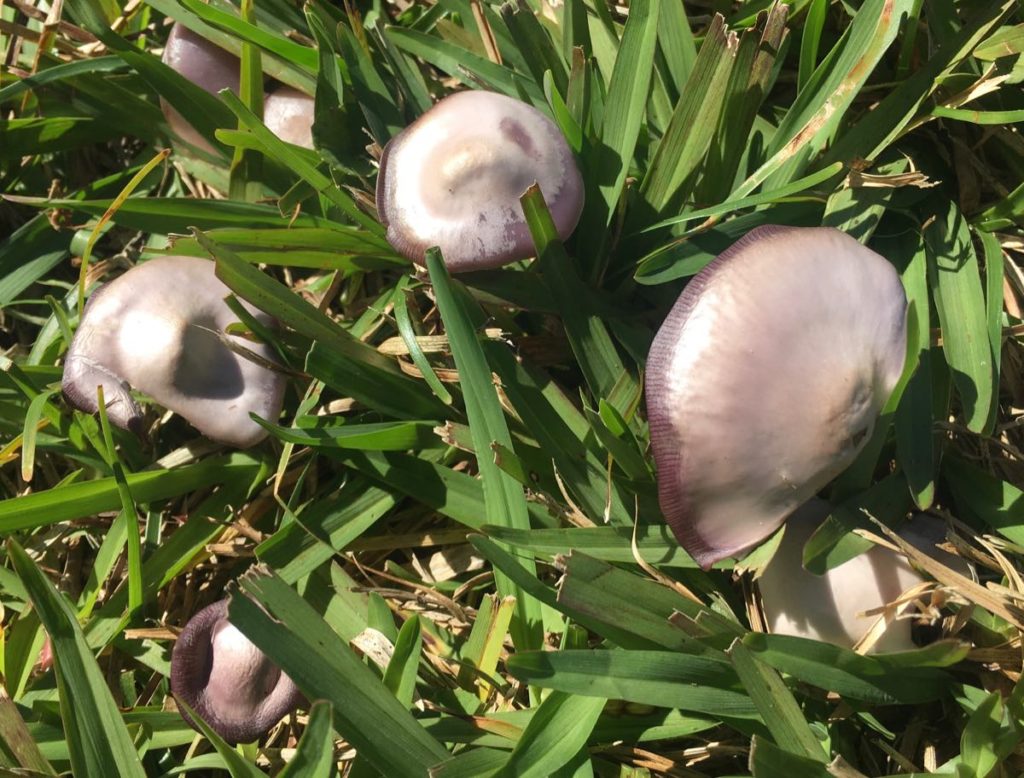
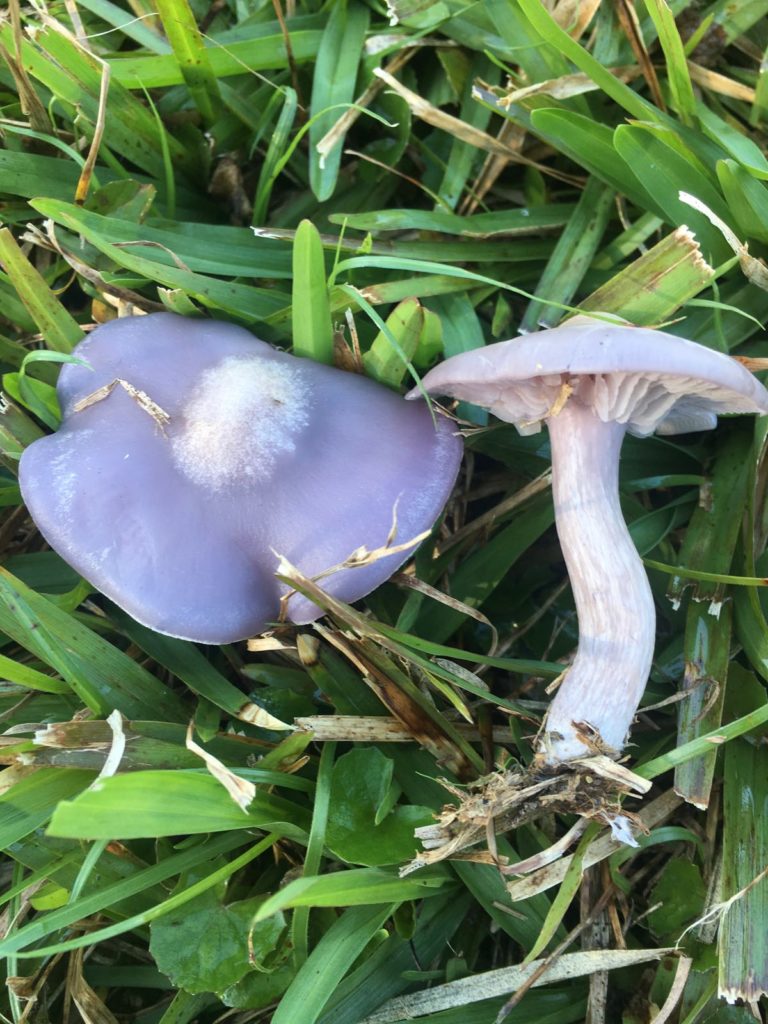
Text & Photos by Michele Bird
What’s Flowering on the Range Road?
On the way up the range road yesterday, Peter and Jan Cooke saw several examples of one of our truly spectacular native flowers, the Native Rosella or Marsh Mallow, Abelmoschatus moschatus tuberosus. The flowers look very much like a Hibiscus (they share the same plant family) and only last for a day or so. They favour drier coastal areas so you will probably not see them around the village. But they are certainly worth looking out for as you drive to Paluma.
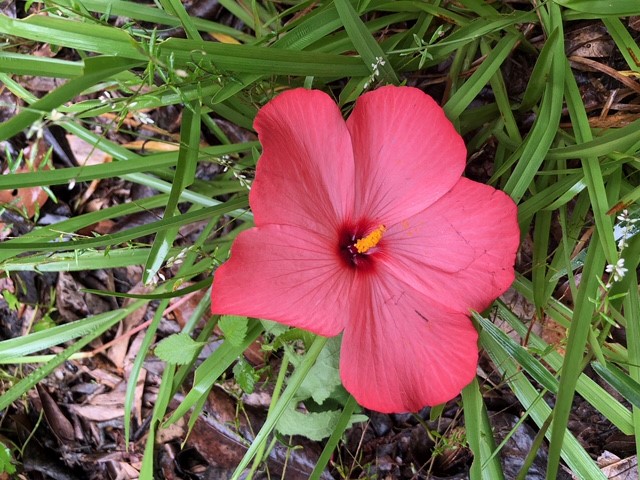
The plant grows along the ground or can be partially upright. It dies back to an underground tuber in the dry season. The tubers, as well as the leaves and seeds are edible and were eaten by local aborigines.
Whats Flowering in Paluma? Mistletoe
Mistletoes are a group of parasitic plants belonging to the Order Santalales. Australia has a high diversity of mistletoes (over 85 species) with the majority in the family Loranthaceae.
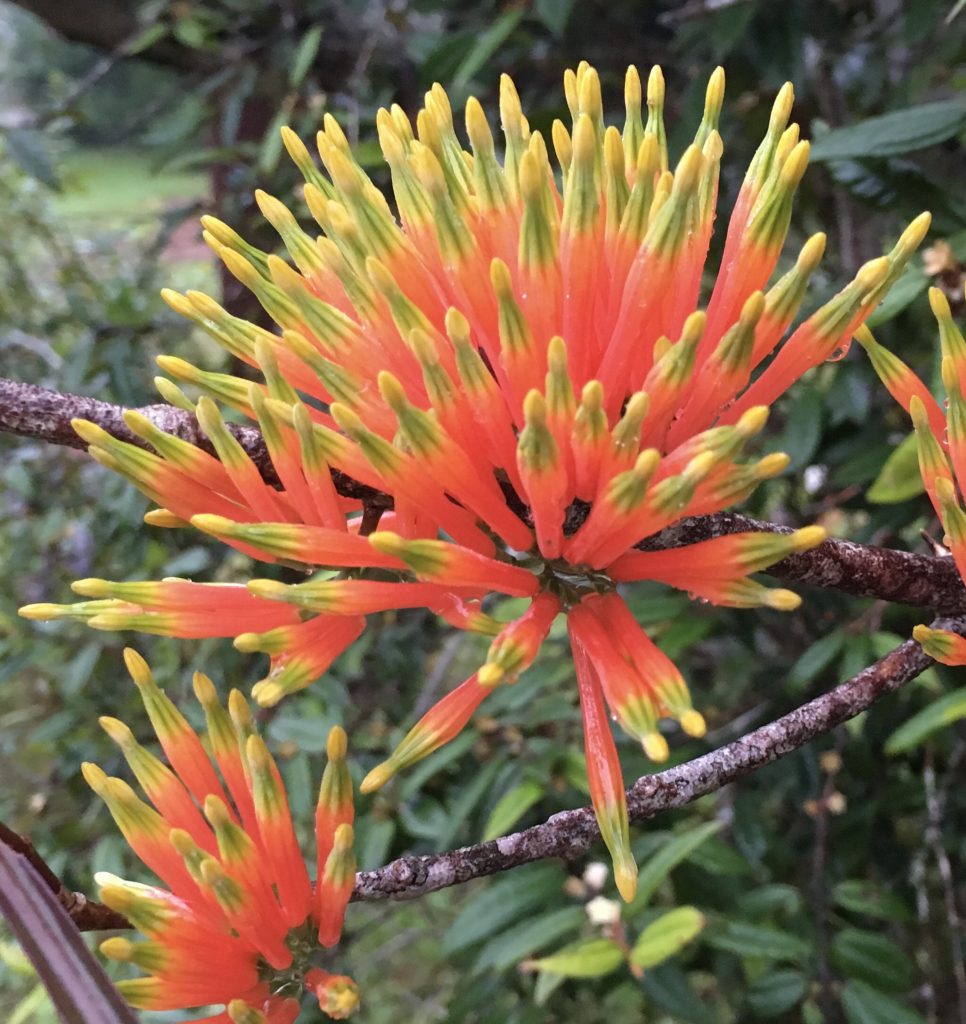
When we think of parasites we often envisage small or microscopic animals that can make you sick, or even kill you, but this way of living (where one organism harms another by using it for nourishment or other vital need) is widespread in all branches of life. In vascular plants parasitism has evolved at least 12 times, with the mistletoe form having evolved 5 separate times within the Order Santalales.
Mistletoes are considered to be obligate hemiparasites because they cannot grow independently of their host plant (the relationship is obligatory) and because they still have their own leaves that can provide a significant proportion of their energy needs through photosynthesis (hemi=half). A spectacular mistletoe in Western Australia looks more like a tree (it parasitises roots rather than tree branches) and is said to be the largest parasite in the world.
Paluma hosts several mistletoe species and one, with beautifully shaped and gaudily coloured flowers is currently in bloom along the roadsides of the village. Its scientific name is a bit of a tongue-twister: Amylotheca subumbellata and it, unfortunately, doesn’t have a common name other than the generic “Mistletoe”. A. subumbellata has a restricted distribution (northeast Qld) with the majority of records from the Paluma region. Its clusters of small torpedo-shaped flowers with orange/red bases and yellow-green tips are very distinctive. Its leaves are also very distinctive, being narrow, strap-shaped and grey-green. One related and more widespread species that is also common around the village is the Bush Mistletoe (Amylotheca dictyophleba) has almost identical flowers, but its leaves are glossy green and ovate. It has very similar flowers (around the village they are more uniformly red), but they differ markedly from A. subumbellata in the shape and colour of their leaves, which are oval glossy green.
The name mistletoe is thought to be derived from two Anglo-Saxon words: “mist or mistel” meaning dung; and “tan” meaning twig. This “dung on a twig” name is quite apt. Mistletoe fruit is a favourite food for the mistletoe bird (a common Paluma resident) but the seed in the fruit is surrounded by a very sticky substance that resists digestion. When a mistletoe bird sits on a branch and tries to defecate, the sticky mass containing the seed just hangs off the birds rear end forcing the bird to wipe its bottom on the branch or twig. The seed is now exactly where it needs to be in order to germinate and infest a new host tree. David Attenborough came to Australia years ago to film this process and the result is a delightful sequence, well worth watching here.
The best places to see both of the mistletoe species discussed here are in the trees on the north side of the road cutting from 27-21 Mt Spec Road, and on either side of the road opposite the High Ropes Course.
Text and photos by Jamie Oliver
What’s Blooming at Paluma: Wisteria variety
We have previously featured some of the temperate and cool climate plants that can successfully be grown on the mountain top at Paluma village. One such success story is Colwyn Campbell’s Wisteria which has burst into full flower with the advent of Spring.

Colwyn planted her Wisteria about six years ago. It was a small plant produced from a cutting grown by Len Cook. Colwyn says that for several years the plant did very little and struggled to grow. Then about three years ago it started to gain vigour and to produce healthy foliage. Colwyn trained it to grow on a wire trellis along one side of her carport. When it flowered for the first time about three years ago, the blooms were rather small and few in number. Last year it produced a few more blooms.
This Spring the Wisteria is most impressive with a mass of lavender to violet coloured flowers in long pendulous sprays. The flowers have a strong sweet perfume and you can literally smell the Wisteria in the air as you walk along Mt Spec Road towards Colwyn’s house.
Most Wisteria varieties are native to Japan and China. Wisteria’s are a deciduous woody climber and can be vigorous if not kept pruned. They are adaptable to many climates and soil types, but they do not like to be waterlogged. They prefer to grow in full sun and they require protection from strong winds. The flowers appear on the bare wood of the plant and after flowering the new light-green foliage appears. Some parts of the Wisteria plant are considered toxic as they contain saponins. They should not be ingested and if handled, it’s a good idea to wash your hands thoroughly.
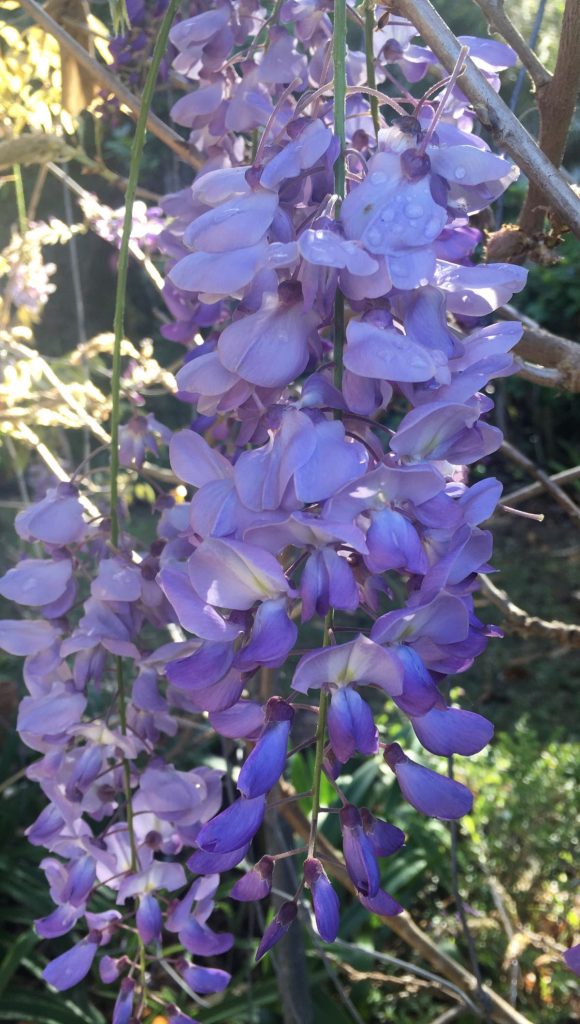
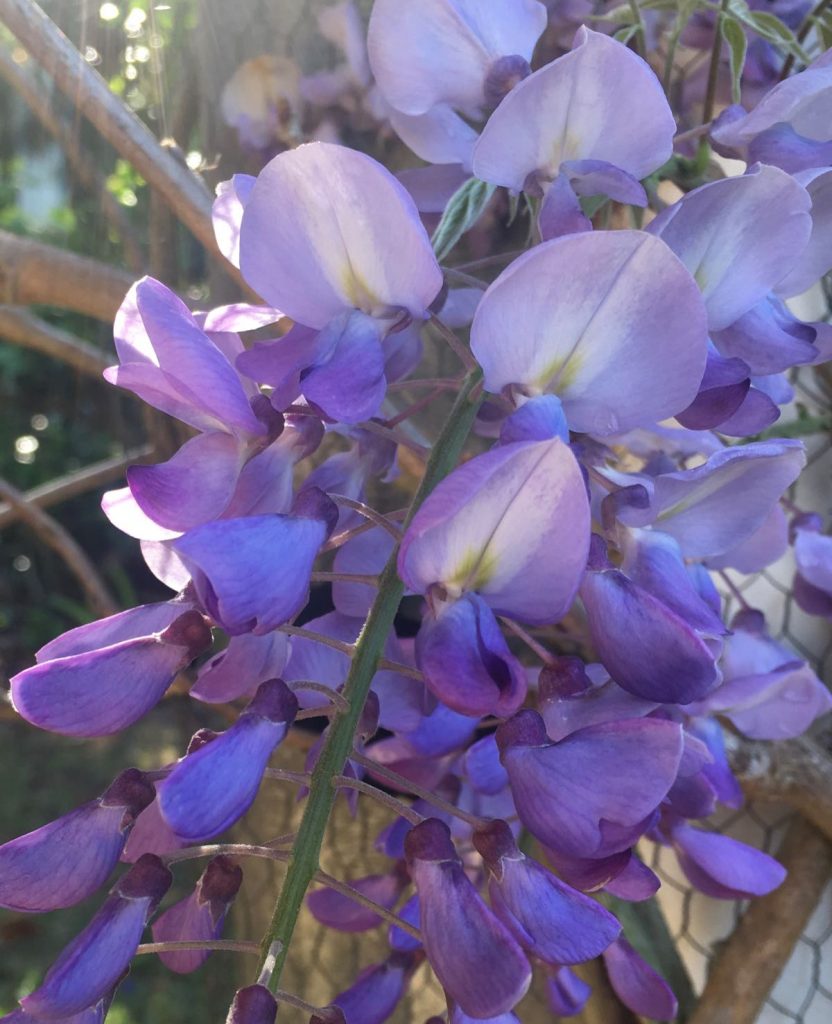
Text & Photos by Michele Bird

